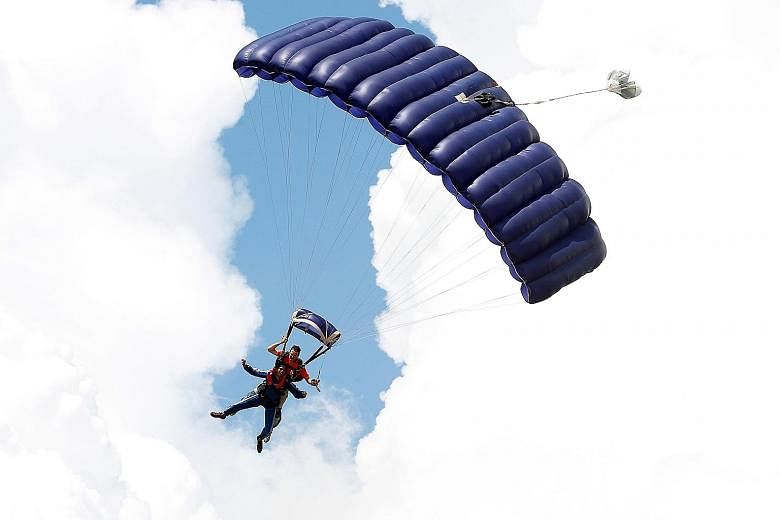Two accidents involving more extreme recreational sports have put the issue of safety under the spotlight.
While industry players and enthusiasts acknowledge there are risks associated with these activities, they also say that such incidents do not reflect the general level of safety.
Last Thursday, Singaporean diver Rinta Paul Mukkam, a 40-year-old associate regional sales manager, failed to surface during a diving trip off Komodo Island. She is still missing.
On Saturday, a Singaporean who went tandem skydiving died, along with his instructor. Mr Mario Low Ke Wei, 29, and his instructor Adrian Lloyd crashed onto the driveway of a property about 1km from the intended landing point.
Industry experts say safety measures are put in place to ensure that risks are mitigated.
President of the Singapore Underwater Federation Yip Kwan Guan said: "Certainly diving carries risks, but they can be mitigated by following the proper procedures and protocol, and risk assessment before every dive."
Both sports are becoming more popular. The Asia Dive Expo in April attracted 60,000 visitors in three days. While skydiving is more of a niche sport, it is estimated that there are 200 to 300 hobby skydivers here.
The chief executive of indoor skydiving facility iFly Singapore, Mr Lawrence Koh, said that tandem skydiving is much safer than solo jumps. "This is because tandem jumps are only basic jumps with no manoeuvres," explained Mr Koh.
According to the United States Parachute Association, there was one fatality per 153,557 jumps made in the US last year.
For tandem skydiving, there was one student fatality per 500,000 jumps in the last decade.
Fatalities from diving are uncommon, but not unheard of. Over the past five years, at least five Singaporeans have died in diving-related accidents overseas.
Skydiving is usually an optional activity with travel agencies as it is a niche activity that is also high-risk.
Ms Jane Chang, 35, head of marketing communications at Chan Brothers, said: "These activities are usually optional because of their high-risk and niche nature. Customers should be aware of the risks that are involved because they have to sign indemnity forms to go for such activities."
Said Ms Alicia Seah, director of public relations and communications at Dynasty Travel: "Any outdoor adventure activity potentially places travellers at high risk, compared to a scenic sightseeing activity. Travellers will have to decide the risk level they are willing to accept."
While some enthusiasts have said that the incidents have reminded them to take safety measures seriously, it is unlikely to deter them from pursuing these activities.
Undergraduate Lim Yi Ting, 22, said that while diving is dangerous, "everything carries a risk". Ms Lim, who has dived around 30 times, added: "This incident reminds me to be more cautious because I sometimes get carried away."
Said another undergraduate, Low Yin Zheng: "If done right, skydiving is still a very safe sport.
"Safety officers at dropzones usually have thousands of jumps on their record and will advise you on what to do in the air."
The 22-year-old, who has made 17 solo jumps in Australia, added: "Accidents like the one last Saturday definitely won't deter me from skydiving in future."

